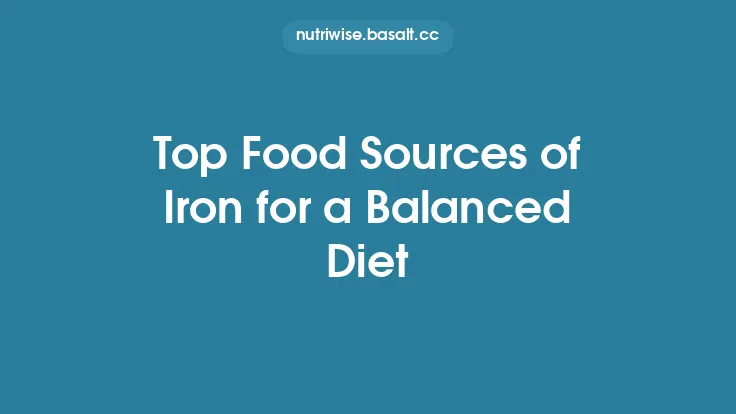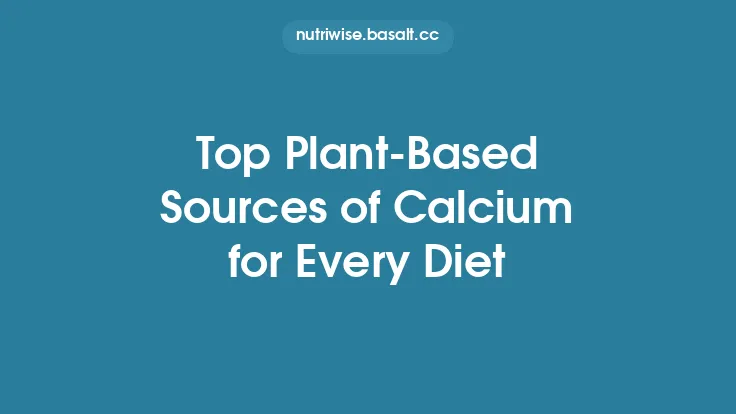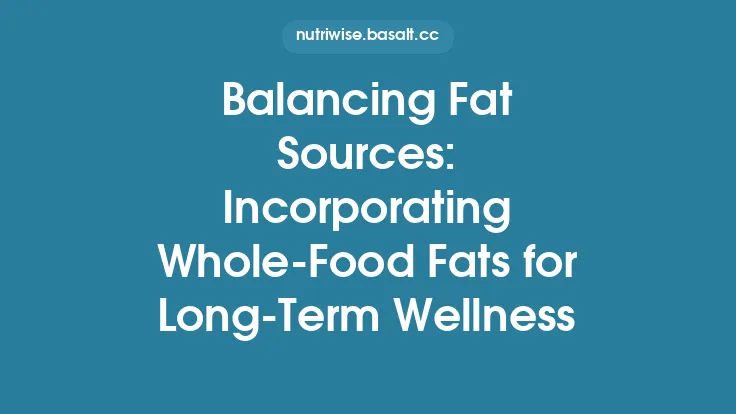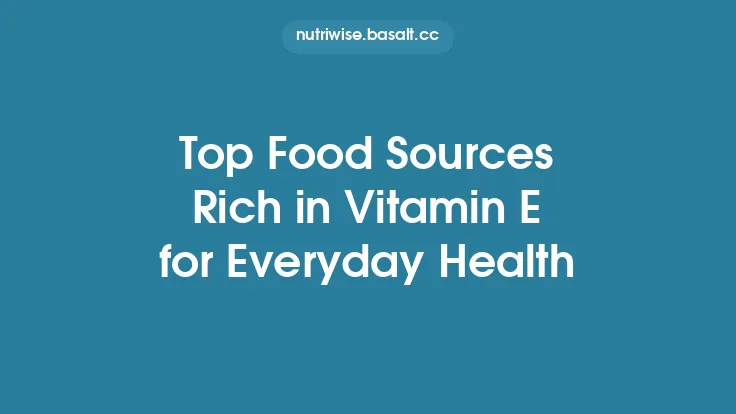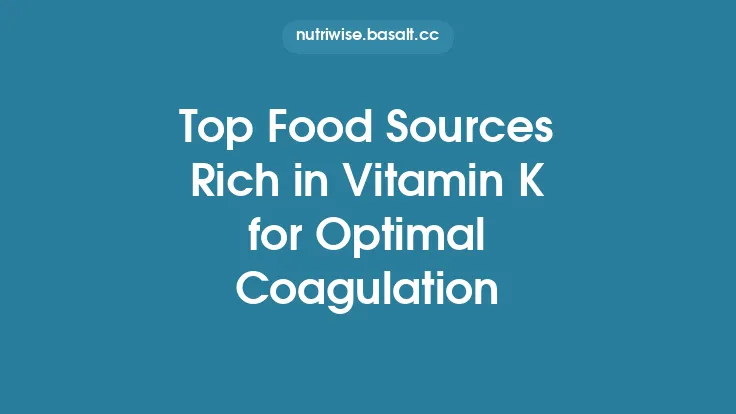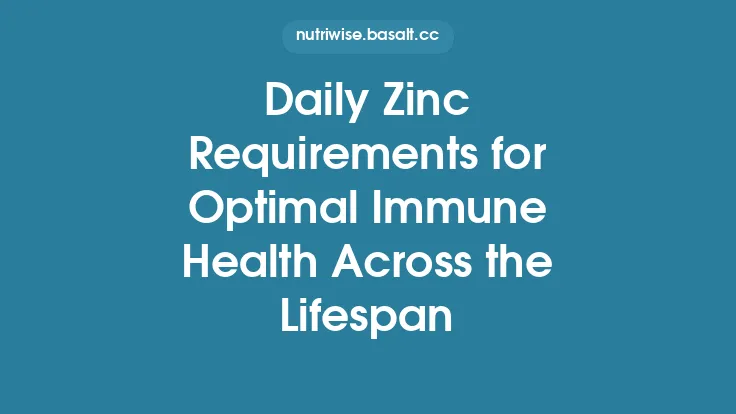Zinc is a trace mineral that the body cannot produce on its own, so it must be obtained through the diet. While many foods contain zinc, the amount that actually reaches the bloodstream—known as bioavailable zinc—varies widely depending on the food matrix and accompanying nutrients. For anyone looking to bolster immune resilience through nutrition, focusing on foods that deliver zinc in a form the body can readily absorb is essential. Below is a comprehensive guide to the top dietary sources of bioavailable zinc, how they differ, and practical ways to incorporate them into everyday meals.
Understanding Bioavailability of Zinc
Bioavailability refers to the proportion of a nutrient that is digested, absorbed, and utilized by the body. Several factors influence zinc’s bioavailability:
| Factor | Effect on Zinc Absorption |
|---|---|
| Animal protein | Enhances zinc uptake by stimulating gastric acid secretion and providing amino acids that form soluble zinc complexes. |
| Phytates (found in whole grains, legumes, nuts, and seeds) | Bind zinc and form insoluble complexes, markedly reducing absorption. |
| Calcium and iron (high doses) | Compete for shared transport pathways, potentially lowering zinc uptake when consumed in excess. |
| Food processing | Soaking, fermenting, or sprouting can degrade phytates, improving zinc’s availability from plant foods. |
| Meal composition | Consuming zinc with a source of animal protein generally improves absorption compared with an all‑plant meal. |
Because of these variables, two foods with identical zinc content can deliver very different amounts of usable zinc. The sections that follow rank foods not only by their zinc concentration but also by how efficiently the body can absorb that zinc.
Animal‑Based Sources with High Zinc Bioavailability
1. Oysters
- Zinc content: ~74 mg per 100 g (≈ 500 % of the adult RDA).
- Bioavailability: Among the highest of any food; the zinc is present in a highly soluble form and is minimally affected by inhibitors.
2. Red Meat (Beef, Lamb, Pork)
- Zinc content: 4–9 mg per 100 g, depending on cut and leanness.
- Bioavailability: Approximately 30–40 % of the zinc is absorbed, thanks to the presence of animal protein and low phytate levels.
3. Poultry (Chicken, Turkey)
- Zinc content: 2–3 mg per 100 g (dark meat slightly higher than white).
- Bioavailability: Similar to red meat, though a bit lower due to marginally less protein density.
4. Organ Meats (Liver, Kidney)
- Zinc content: 4–6 mg per 100 g.
- Bioavailability: High, with the added benefit of other micronutrients that support overall health.
Why they matter: Animal-derived proteins provide amino acids that form soluble zinc complexes, facilitating transport across the intestinal wall. For individuals who include animal products, these foods are the most reliable way to meet zinc needs without relying on large portion sizes.
Seafood: The Zinc Powerhouse
1. Oysters (re‑emphasized) – The clear leader, especially for those who enjoy shellfish.
2. Crab and Lobster
- Zinc content: 3–5 mg per 100 g.
- Bioavailability: High, comparable to other crustaceans.
3. Shrimp
- Zinc content: ~1.5 mg per 100 g.
- Bioavailability: Good, though lower absolute zinc due to smaller content.
4. Fish (e.g., Salmon, Sardines, Mackerel)
- Zinc content: 0.5–1 mg per 100 g.
- Bioavailability: Moderate; the presence of omega‑3 fatty acids does not hinder zinc absorption.
Seafood offers the dual advantage of high zinc bioavailability and a suite of other nutrients (e.g., omega‑3s, selenium) that support overall physiological function.
Dairy and Fortified Products
1. Cheese (Cheddar, Swiss, Parmesan)
- Zinc content: 2–4 mg per 100 g.
- Bioavailability: Moderate to high; calcium in dairy can modestly compete with zinc, but the overall absorption remains efficient.
2. Yogurt (Plain, Greek)
- Zinc content: 0.5–1 mg per 100 g.
- Bioavailability: Good, especially when the product contains live cultures that may aid mineral uptake.
3. Fortified Cereals and Plant Milks
- Zinc content: Varies widely; many products are fortified to provide 2–5 mg per serving.
- Bioavailability: Dependent on the fortificant form (zinc sulfate, zinc gluconate, zinc citrate). Zinc citrate generally offers better absorption than zinc oxide.
Dairy and fortified foods are valuable for individuals who consume less meat or seafood, providing a reliable source of zinc that is relatively easy to incorporate into daily meals.
Plant‑Based Sources and Strategies to Enhance Absorption
1. Legumes (Lentils, Chickpeas, Black Beans)
- Zinc content: 1–2 mg per 100 g cooked.
- Bioavailability: Low to moderate due to phytates. Soaking, sprouting, or fermenting can reduce phytate levels by up to 50 %, markedly improving zinc uptake.
2. Nuts and Seeds (Pumpkin Seeds, Hemp Seeds, Cashews, Almonds)
- Zinc content: 2–4 mg per 100 g (pumpkin seeds are among the richest).
- Bioavailability: Moderately low; however, roasting or lightly toasting can diminish phytate content.
3. Whole Grains (Quinoa, Oats, Brown Rice, Whole Wheat)
- Zinc content: 1–2 mg per 100 g cooked.
- Bioavailability: Generally low because of phytates. Techniques such as overnight soaking, using a sourdough starter, or adding a splash of lemon juice (which provides mild acidity) can improve mineral release.
4. Vegetables (Mushrooms, Spinach, Kale)
- Zinc content: 0.5–1 mg per 100 g.
- Bioavailability: Relatively low, but they contribute to overall dietary diversity and provide complementary nutrients.
Enhancement strategies (without venturing into cooking‑specific tips):
- Pair plant‑based zinc sources with a modest amount of animal protein (e.g., a serving of beans with a few slices of lean meat) to boost overall absorption.
- Include fermented foods (e.g., tempeh, miso) that naturally contain lower phytate levels.
- Opt for sprouted grain products when available, as sprouting initiates enzymatic breakdown of phytates.
These approaches allow vegetarians, vegans, and flexitarians to maximize the zinc they obtain from plant foods.
Nuts, Seeds, and Legumes: Balancing Content and Bioavailability
While nuts and seeds are celebrated for their healthy fats, they also pack a respectable amount of zinc. Pumpkin seeds, in particular, deliver up to 7 mg of zinc per 100 g, making them one of the most zinc‑dense plant foods. However, the presence of phytates means that the body may only absorb about 15–20 % of that zinc under typical conditions.
Legumes, on the other hand, provide a combination of protein and zinc. When legumes are prepared using soaking or sprouting methods, the phytate reduction can raise zinc absorption to roughly 30 % of the total content—still lower than animal sources but a meaningful improvement.
For those relying heavily on these foods, the key is frequency and variety: consuming a range of zinc‑rich plant foods throughout the day can cumulatively meet needs, especially when paired with modest animal protein or fermented products.
Practical Tips for Building a Zinc‑Rich Diet
- Prioritize high‑bioavailability foods: Include at least one animal‑based or seafood source (e.g., a serving of oysters, beef, or chicken) a few times per week.
- Combine protein sources: When eating plant‑based meals, add a modest portion of lean meat, fish, or dairy to improve zinc uptake.
- Utilize phytate‑reduction methods: Soak beans and grains for several hours, sprout seeds, or choose fermented grain products.
- Select fortified options wisely: Look for products fortified with zinc citrate or zinc gluconate rather than zinc oxide for better absorption.
- Mind portion sizes: Because some high‑zinc foods (like oysters) are nutrient‑dense, a small serving can provide a substantial portion of daily needs.
Sample Meal Ideas for Immune Support
- Breakfast: Greek yogurt topped with pumpkin seeds, a drizzle of honey, and fresh berries.
- Mid‑Morning Snack: A handful of roasted cashews paired with a slice of low‑fat cheese.
- Lunch: Quinoa salad with black beans, diced chicken breast, chopped bell peppers, and a squeeze of lime (the acidity helps reduce phytate impact).
- Afternoon Snack: Whole‑grain crackers with hummus and a few slices of smoked salmon.
- Dinner: Grilled steak (or tofu for a plant‑based version) served with sautéed spinach and a side of roasted sweet potatoes.
- Evening Option: A small bowl of fortified oatmeal prepared with milk, topped with sliced almonds.
These meals blend animal and plant sources, incorporate phytate‑reduction tactics, and keep the overall diet varied and enjoyable.
Considerations for Special Populations
- Vegetarians and Vegans: Emphasize legumes, nuts, seeds, and fortified products, and consistently apply phytate‑reduction techniques. Pairing these foods with dairy (if lacto‑vegetarian) or with modest amounts of fish/eggs can further enhance absorption.
- Older Adults: Gastric acid production tends to decline with age, which can impair zinc absorption. Including more animal‑based sources, which are less dependent on high acidity, can help offset this effect.
- Athletes and Highly Active Individuals: Higher protein turnover may increase zinc requirements. Incorporating frequent, moderate portions of high‑bioavailability foods (e.g., lean meat, seafood) throughout the day can support the increased demand.
Bottom Line
Zinc’s role in supporting a robust immune system is well established, but the mineral’s effectiveness hinges on how much of it the body can actually use. By focusing on foods that deliver zinc in a highly bioavailable form—such as oysters, red meat, poultry, and certain seafood—and by employing simple dietary strategies to improve the absorption of plant‑based zinc, anyone can construct a diet that consistently supplies this essential trace mineral. The result is a nutritionally sound, evergreen approach to maintaining immune resilience through everyday eating habits.
